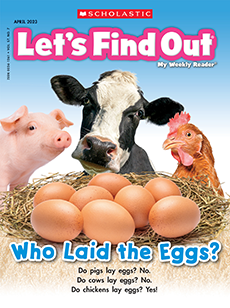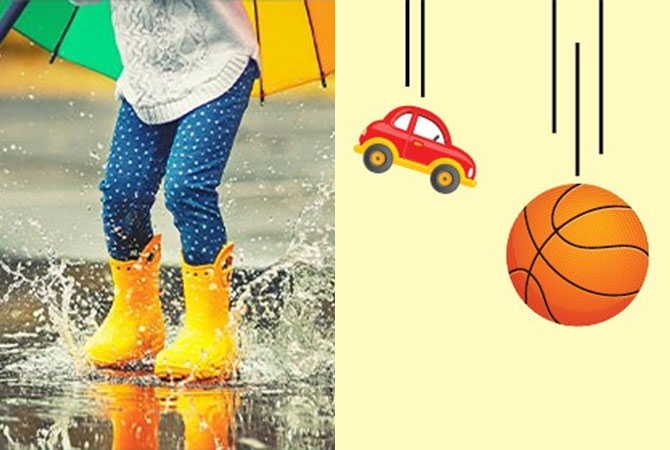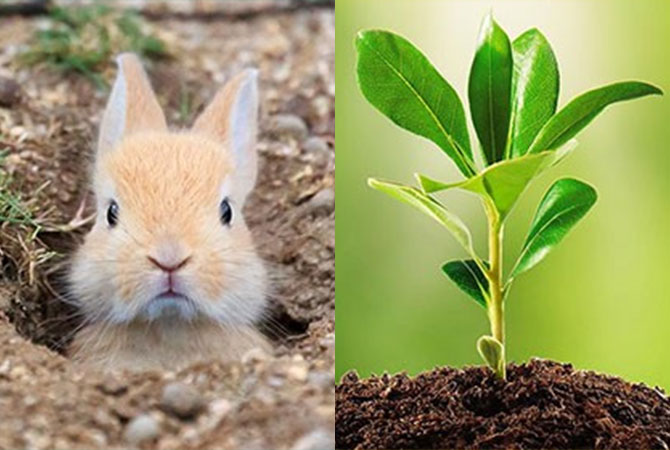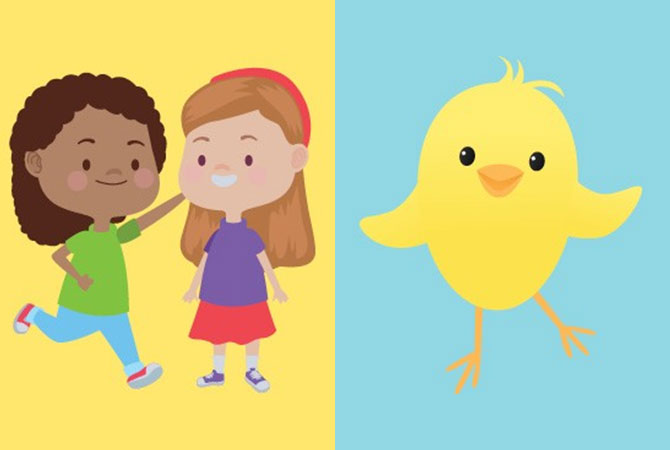1. Balloon Keep-Up
This activity has movement and math.
Materials: a balloon
Challenge your child to keep a balloon from falling to the floor without catching or holding it! Add in some counting practice. How many times can they hit it up before it falls?
2. Classic Game of Hot/Cold
This activity builds vocabulary.
Materials: an item to hide
Remember this game? Hide an item (toy, hat, anything) in the room. Have your child wander around looking for the item. If they are moving away from the item, say they are getting colder . . . icy . . . freezing cold! If they are moving closer, say they are getting warmer, hot, boiling hot! Have fun building vocabulary by using different words for hot and cold.
3. Look for Letters!
This activity builds early reading skills.
Materials: any items in the kitchen
Do an alphabet scavenger hunt in the kitchen! Give your child a letter to look for on boxes, canned goods, jars—anything with a label. Make it an ongoing challenge by starting with A and going in alphabetical order. Can you find every letter in the alphabet?
4. Indoor Obstacle Course
This activity gets your child moving!
Materials: items from around the house, such as pillows, tape, balls, a broom, tissues, chairs, a stopwatch, etc.
Create some space for the obstacle course. Set up some obstacles, like pillows to climb over or a broom set across two chairs to crawl under. Have your child move from obstacle to obstacle doing different movements—slithering like a snake, carrying a cotton ball on a spoon, bouncing a ball, or crab walking. You can also create mini-challenges, like jumping over a piece of tape five times or singing “Twinkle Twinkle Little Star” while they stick out their tongue. When you’re done setting up, have your child do the obstacle course. Time them as they go. Then challenge them to do it again to try and beat their previous time!
5. Color and Shape Search
This activity helps your child work on counting, shapes, and colors.
Materials: none
Go on a walk with your child. While you’re walking, give them a challenge of things to find by picking a number and a category. For example, ask your child to find five green things or seven squares. Then work together to find them! You could also do this activity inside your home.
6. Indoor Bowling
This activity builds math skills and hand-eye coordination.
Materials: plastic cups, empty cans or plastic bottles, ball
Make your own indoor bowling alley! Set up 10 plastic cups, empty cans, or empty plastic bottles as pins. Then create a starting line, and let your child “bowl” using a ball. While they are playing, ask how many pins fell down each time. How many are left?
7. Freeze Dance
This activity fosters coordination and motor skills.
Materials: music, space (indoor or outdoor)
Play your child’s favorite song. Have them dance while the music plays. Stop the music every 15 to 30 seconds and then freeze in place whenever it stops! Keep going until the song ends.
8. Mirror, Mirror
This activity improves concentration.
Materials: none
Have your child stand face-to-face with someone else.
Choose who will be Person A and who will be Person B. Person A will be the “mover” first. Person A will start out with small movements, like wiggling their nose. Then they should try bigger movements, like swinging an arm from side to side. Person B must follow Person A’s movements EXACTLY. It should look like Person A is looking in a mirror!
Then switch! Person B will be the “mover.” Person A will follow their every move.



